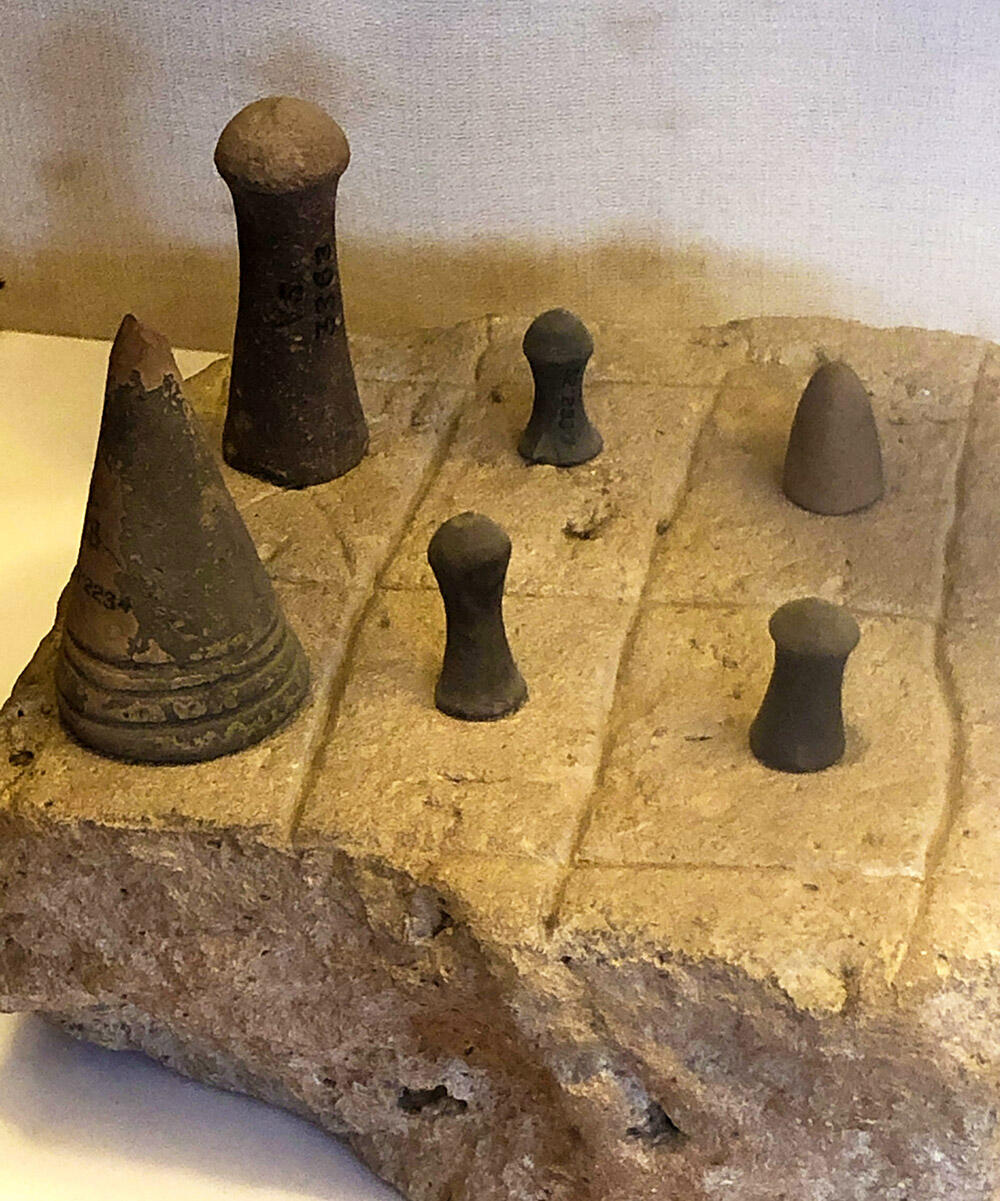Note that the conical piece in the lower left is likely not a gaming piece but a pointed cone. Dr. Kenoyer writes (Ancient Cities, p. 120).
"In most cultures, ritual games are used for predicting the future or educating children about social and religious ideals. Gaming boards carved onto bricks or made of fired clay have been found at most Indus sites, but there is no standardized shape or form. Most boards have a large square divided by vertical, horizontal and sometimes diagonal lines (fig. 6.39) Many similar gaming boards are still used by chil- dren throughout the northern subcontinent to play strategy games, such as capturing the "tiger" with "elephants." Other game boards are used in fortune-telling and gambling, both favorite pastimes in cities and villages. Dice can be simple split reeds, cowrie shell, cubical dice or finely carved ivory rods with circles incised on each face. Traditional gaming pieces are usually made of wood or ivory in various conical or spherical shapes with distinctive designs or colors."
On conical objects in general, both large and small, Dr Kenoyer writes (p. 110):
"Conical stone objects found in the early excavations at both Mohenjo-daro and Harappa have often been referred to as phallic symbols. In the past these objects were associated with the ringstones, which were thought to symbolize female reproductive organs. Yet many conical objects appear to have been used as pestles, and as discussed above, most ringstones can be associated with architectural features. Nevertheless, some conical stone pieces, both large and small, may in fact have been used as phallic symbols. Made from a variety of materials, most larger examples were made from white limestone or brown-and-yellow banded sandstone (fig. 6.14). Miniature conical pieces were made from shell, faience or even terracotta (fig. 6.15). While some may have been gaming pieces, others have a tiny hole in the base, as if they were to be attached or anchored to a base. Hemispherical bases of stone and terracotta with circular depression on the top have been found at both Mohenjo-daro and Harappa. Some scholars think these stands were used for supporting phallic stones or perhaps images, but so far none have been found in situ."
See also the article by Elke Rogersdotter Split Appearance. Patchy and Coherent Features in Fragments of Gameplay, Mohenjo-daro, Sindh, and our Question 70. Did they play mancala in the ancient Indus Valley?

